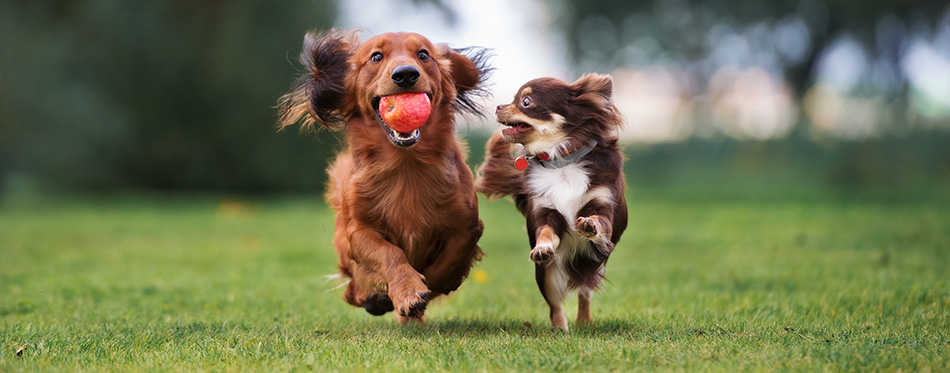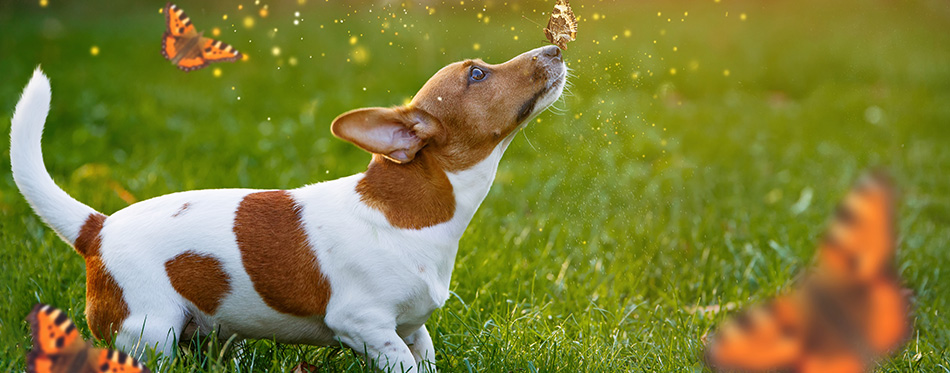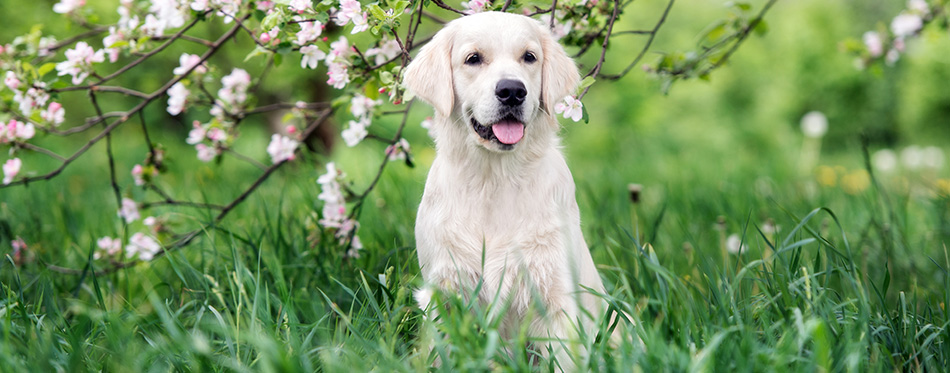The weather has finally changed, your household is going all out with their spring cleaning measures, and the dog park awaits your fluffy friend!
But wait! Are you fully prepared for spring with your dog? Now that they’re shedding their winter coats, do you have everything you need? Worry not, here, we will help you prepare for the new season and the warm weather it’s bringing with it.

Prepare Your Dog for Spring: The List
In this section, you’ll find a helpful list of items that dog owners find helpful to have on them or at home during the springtime. Spring is a great time for dogs; after the cold and wet of winter, the world opens back up to them, allowing them to go out and explore with their favorite human.
Dog Supplies for the Home
Shampoo and Conditioner
Having quality dog shampoo and conditioner at home means that you can give your dog a luxurious bath as regularly as they need one, without relying on paying for a groomer to brush your dog.
Some products can also help with flea and tick issues. Fleas and ticks thrive in the warmer months!
Treats
Dog treats are the cornerstone of training and rewarding any dog. Keep a good supply of them for your pet and remember to buy new dog toys, too.
Good Quality Dog Food
Look for dog food that doesn’t have any filler ingredients like meat or animal meal. It would be ideal if you could commit yourself to some dog food research!
Dog Supplies for Walks
Doggy Raincoat
A good quality outdoor coat is crucial for smaller dogs who may have trouble regulating their temperature. You’ll also benefit by not having a dripping wet dog after it inevitably rains during your walk. They can also be cleaned in your washing machine! Head over to our reviews of the best dog raincoat and best umbrella for dogs.
Bowls
Collapsible bowls are a great addition to any dog walking kit. All you need then is a water bottle or a nearby water fountain to fill it up for your dog.
Dog Harness Lead
A harness lead is much more beneficial for your dog. They’re also safer, and less likely to hurt your dog. Buy a harness where the lead clips onto the front, and you’ll find that your dog doesn’t get away from you as often as they did before.
Insect Repellent
Depending on where you live, spring and summer may be the perfect time for mosquito bites and Lyme disease to rear their ugly heads. Insect repellent will keep your pet safe from awful things like insect-transferred diseases.
Dog Health
Health Check-up Appointment
If it’s been a while since your last visit to the veterinarian, why not take your dogs to their annual check-up appointment? Your veterinarian will thank you for not needing to chase you down and remind you about check-ups, and you can be sure that your dogs are all healthy.
This is especially important if your dogs are prone to seasonal allergies in spring and summer, or you’re worried about disease-carrying insects during the season.
Groomer Appointment
Another vital appointment to keep is the grooming appointment. Your dog will be shedding whatever winter coat they haven’t already spread around your home, and it’s important to have a brush run through their coat, at least.
Some dogs don’t need to be shaved and shouldn’t be, these are any breeds with a double coat. Others should be fine to have their fur trimmed down if needed. Otherwise, just let your dog enjoy a nice bath at the groomer’s and a well-deserved brush.
Dental Appointment
It’s a great idea to talk about getting your dog’s teeth checked during your vet visit. Your regular vet should be able to look over your dog’s teeth during their check-up. The same vet will be able to tell you if there are any issues.

Important Prep for Your Pup
Now that you have a list of items that you should keep in stock, it’s time to talk about other things like preventing diseases and keeping your dog healthy.
The Thing About Fleas
Fleas are easy to deal with, but did you know that your dog could be catching them from your garden? It’s hard to check your yard for these insects, but you can put down pet-safe flea repellent and bug repellent in your yard to give your pets more of a fighting chance against these pests.
Fight Infections From the Outdoors
There’s been a rise in dog paw infections in recent years. Dog’s paws can easily get cut if they walk over something sharp, and unfortunately, we live in a world where a percentage of people refuse to pick up after themselves.
This leads to broken bottles and other such things lying around in long grass. Your pets don’t see the danger, they run through the grass, and suddenly you have a vet bill on your hands and a pet that has a risk of getting an infection.
Where possible, keep your pet to short grass unless you know it’s safe. Always wipe their paws after they’ve been in the grass, too. The pesticides used there may also harm your pet. When you check your yard at home, consider the area your pet plays in and its level of safety, too.
Check out our guides on Dog Paw Washer and Paw Protection Wax.
Has Your Dog Been Castrated?
Domestic pets that aren’t castrated run a risk of infections, getting other pets pregnant, erratic behavior, and more. It’s recommended by every vet to have your pets castrated as soon as possible, provided that they meet the age and weight requirements for their species.
During spring, you’ll see lots of other pets around. Those who aren’t castrated with exhibit strange behavior as they go into heat, with male pets becoming particularly aggressive. This aggression in pets is one of the top reasons that vets tell people to have their pets castrated. There are far too many injuries caused by uncastrated pets.
Give Your Dog Their Own Corner
If you haven’t already, your dog should have their own space in your home – because it’s their home, too.
A dog that has their own corner of the house is a dog that has somewhere to go when they don’t want to be social. Without a space of their own, your dog is forced to constantly be around people.
Seasonal Dangers
The domestic dog and cat can be allergic to a number of things. There are even flowers that are fatally toxic to them.
A runny nose may be just that, but when it’s accompanied by higher temperatures and other symptoms, it’s time to get your pets checked out. Even if they’re fine, it’s better to skip the hazards and find out it’s treatable ticks than something serious like heartworm. Find out more about heartworm medicine for dogs here.
Allergies can also present in the people who live with dogs. It’s likely that those people are actually allergic to the pollen on the dog’s hair or the dog’s own saliva. Both are perfectly normal.

FAQs:
Q: Which dog park should I take my dog to?
A: You should visit any dog park that is on your walking route and you have checked out beforehand. By checking the dog park before you take your dog, you can inspect it for safety and cleanliness. This could then become a regular park for your dog to go to.
Q: Can dogs go for walks in the rain?
A: Dogs can certainly go for walks in the rain. We recommend investing in a good quality raincoat for your dog if you plan on doing this often or live in a wet climate.
Dogs love walks, no matter the weather, just be careful of unseen hazards on your path.
Q: How much water do dogs need to drink?
A: A dog needs to drink around one ounce of fluid per pound of weight. Active dogs may need a little more, and puppies will need more than that.
If you’re concerned by the amount your dog is or isn’t drinking, check them for other symptoms – like raised temperatures – and make an appointment with your vet.

